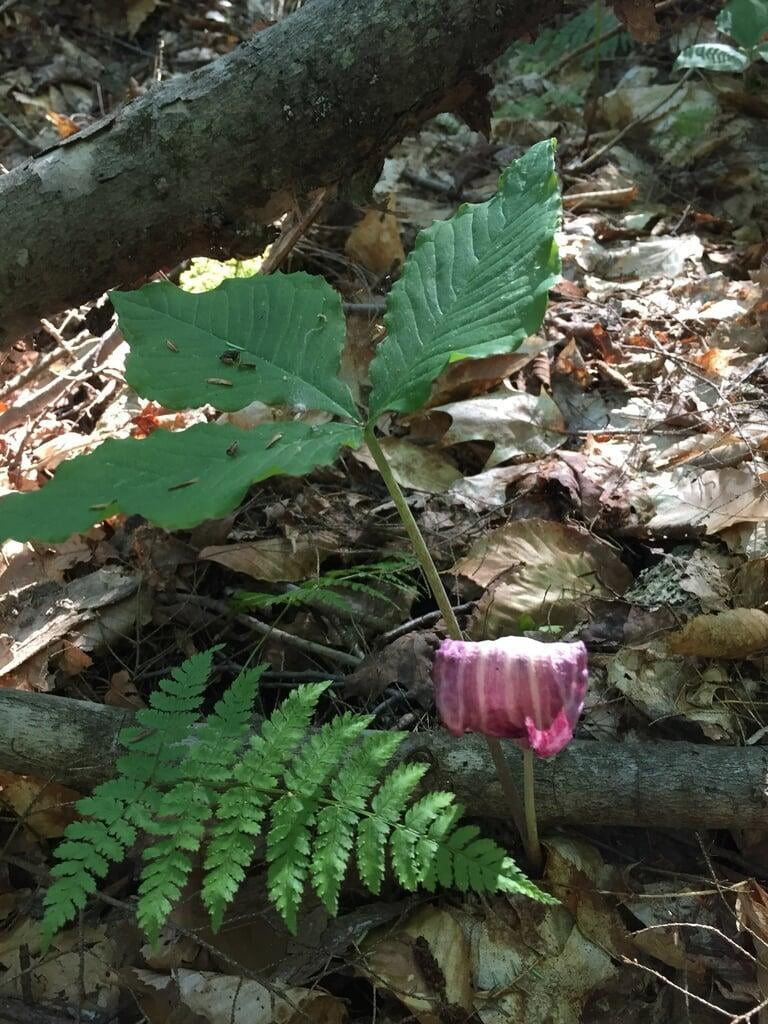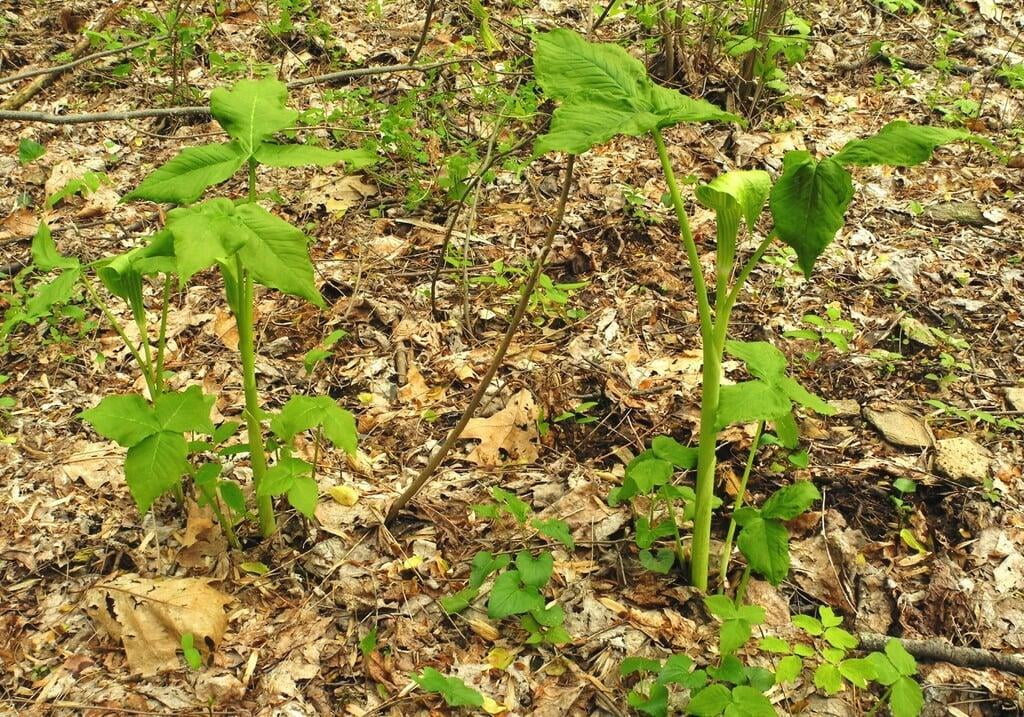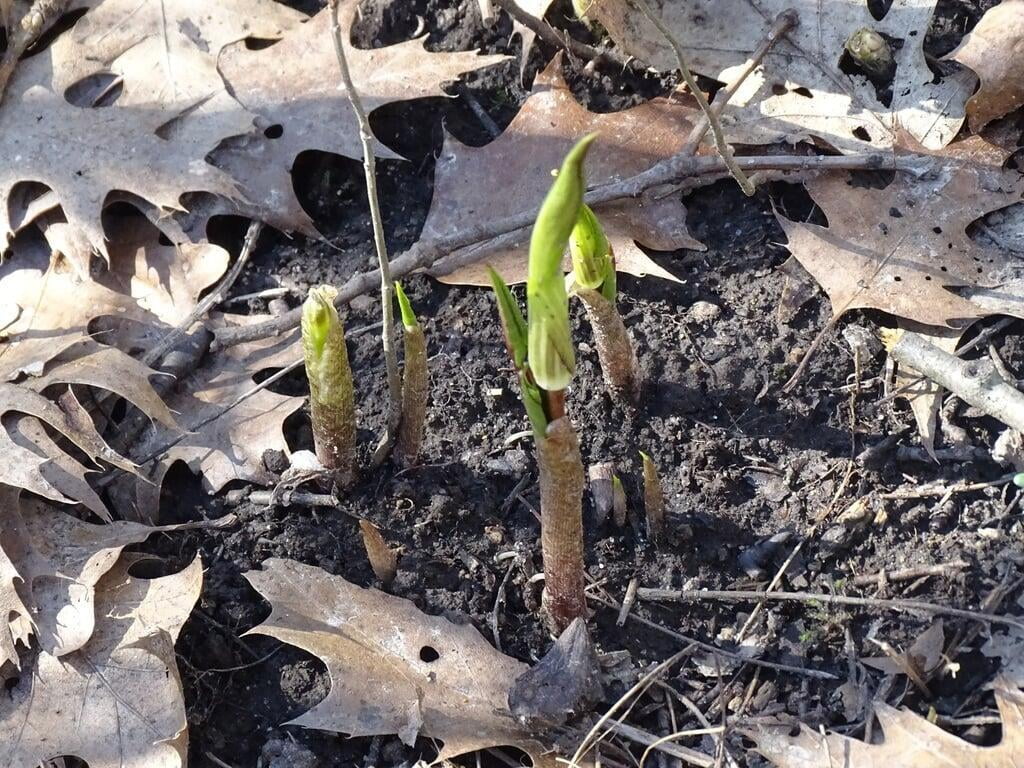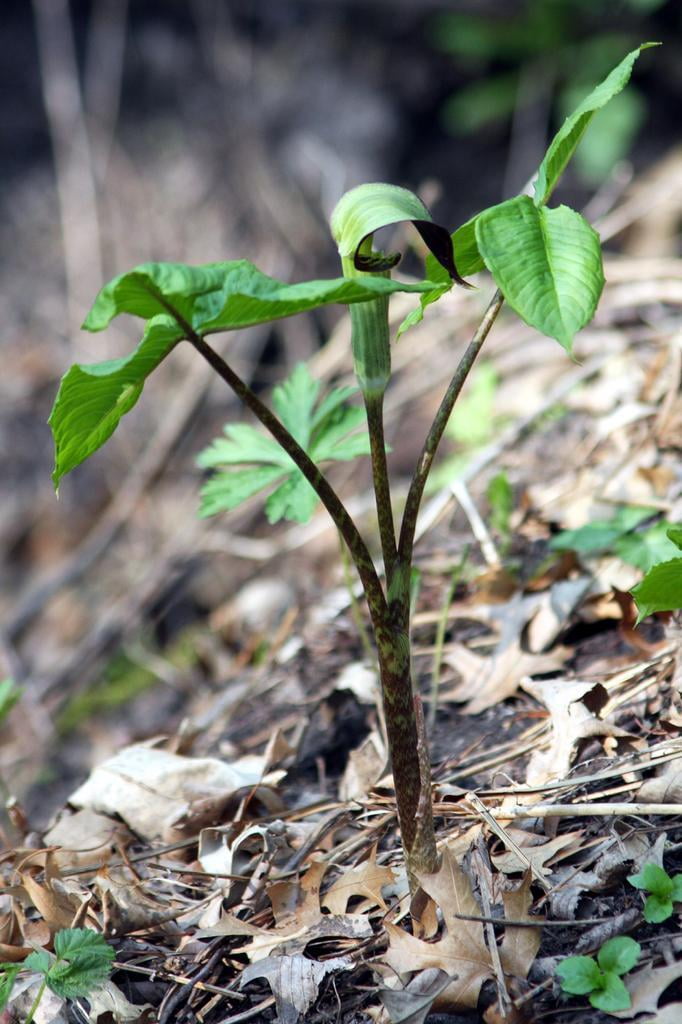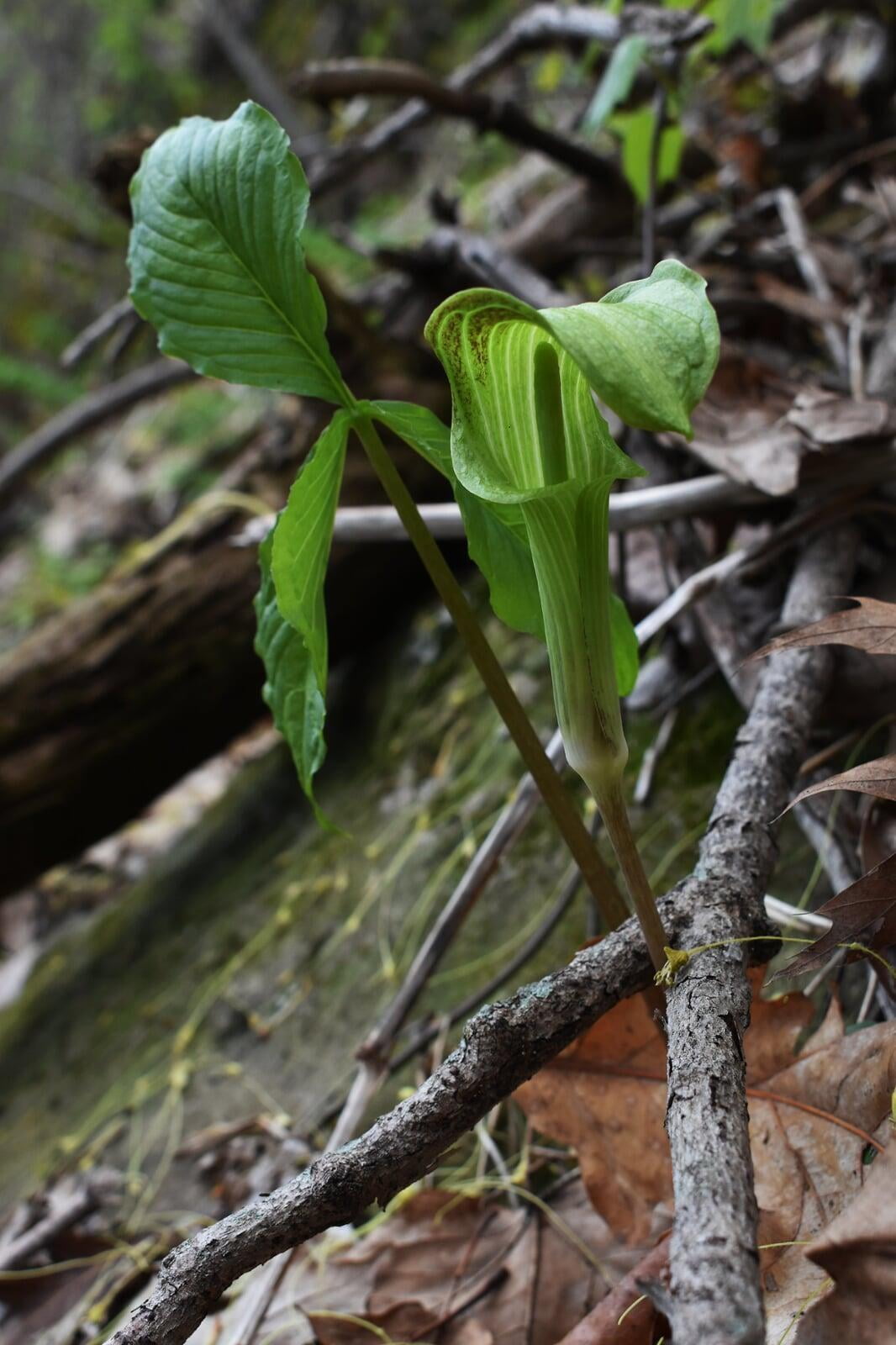Arisaema triphyllum
Jack-in-the-pulpit Description:
Arisaema triphyllum, commonly known as Jack-in-the-pulpit, is a herbaceous perennial plant native to North America. It typically grows up to 1 to 3 feet in height and has tripartite leaves that are dark green and glossy.
The unique flower structure of Arisaema triphyllum consists of a spadix (a fleshy columnar spike) surrounded by a hood-like spathe. The spathe is usually green and striped with purple or brown, and can reach up to 25 cm in length. The spadix is covered in tiny flowers that are either male or female, with male flowers located towards the top and female flowers at the bottom.
Arisaema triphyllum blooms in the spring, and its fruit is a cluster of bright red berries that ripen in the fall. The plant prefers shady, moist woodland habitats and can be found in forests, meadows, and along streams and rivers throughout much of eastern North America.
While the plant is highly ornamental and unique, it's important to note that all parts of the plant, including the berries, contain calcium oxalate crystals that can cause skin irritation or a burning sensation if ingested.
Native Range:
Jack-in-the-pulpit is a popular native plant species because of its unique flower structure and because of its widespread native habitat, which ranges from North Dakota, down to Texas, and every state in the Continental United States East of there.
Standard Plant Information:
Plant Height: 1' - 3'
Bloom Time: April - June
Preferred Habitat: Does well in shaded, moist woodland habitat.
Sowing:
For most homeowners, the best option is to scatter seed on the ground by hand broadcasting at a minimum of 16-64 pls ounces per acre. For even coverage, we recommend that you broadcast seed in perpendicular rows across the site to ensure even coverage.
You’ll want to broadcast any grass seed first, which will get raked into the soil lightly. Next, it is ideal to mulch the area lightly with either a clean (no seed) straw or preferably with our native Little Bluestem straw, sold at our retail garden centers. After a light mulching is complete, now it’s time to broadcast your native wildflower seeds, which should not be raked into the soil. A good rain or watering is sufficient to cover the seed.
Planting:
Simply dig a hole in the soil slightly larger than the plant’s roots. Ensure that the soil line of the plant is maintained during the transfer (i.e. the plant should be at the same level with the ground as it was in the pot). Pack any loose dirt back around the plant and make sure you water it well the same day to ensure it has the best chance of survival.
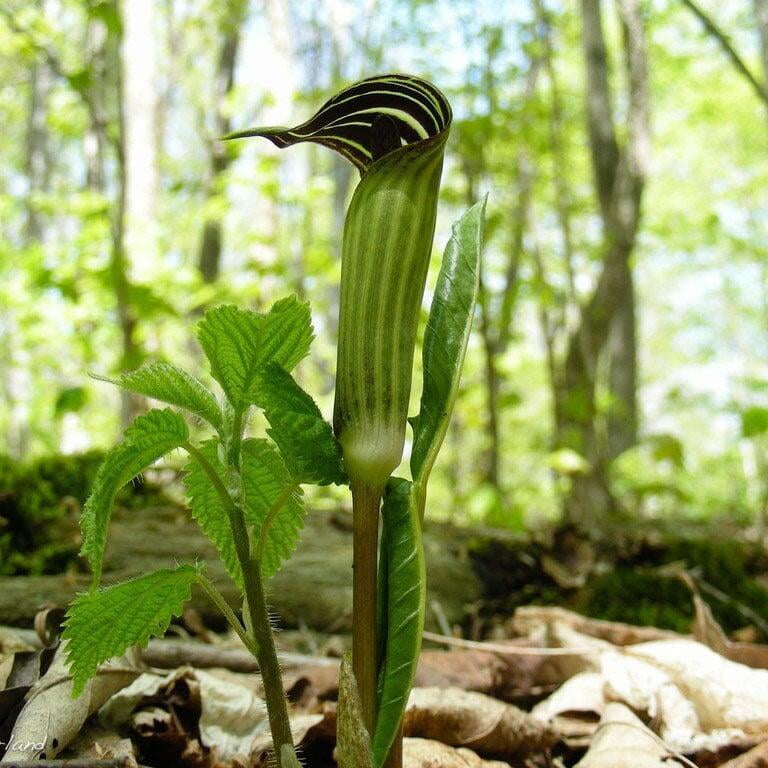
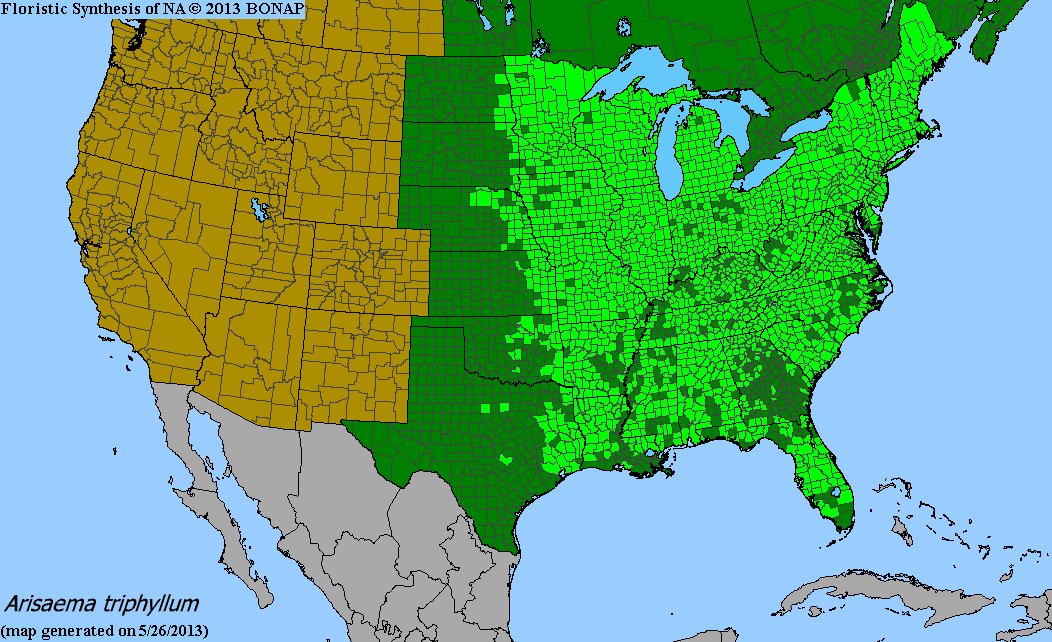
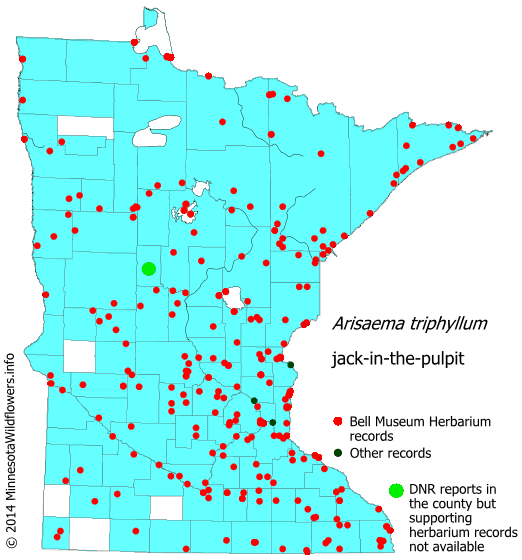
maps used with permission from MN Wildflowers
Arisaema triphyllum Gallery
Arisaema triphyllum Gallery

